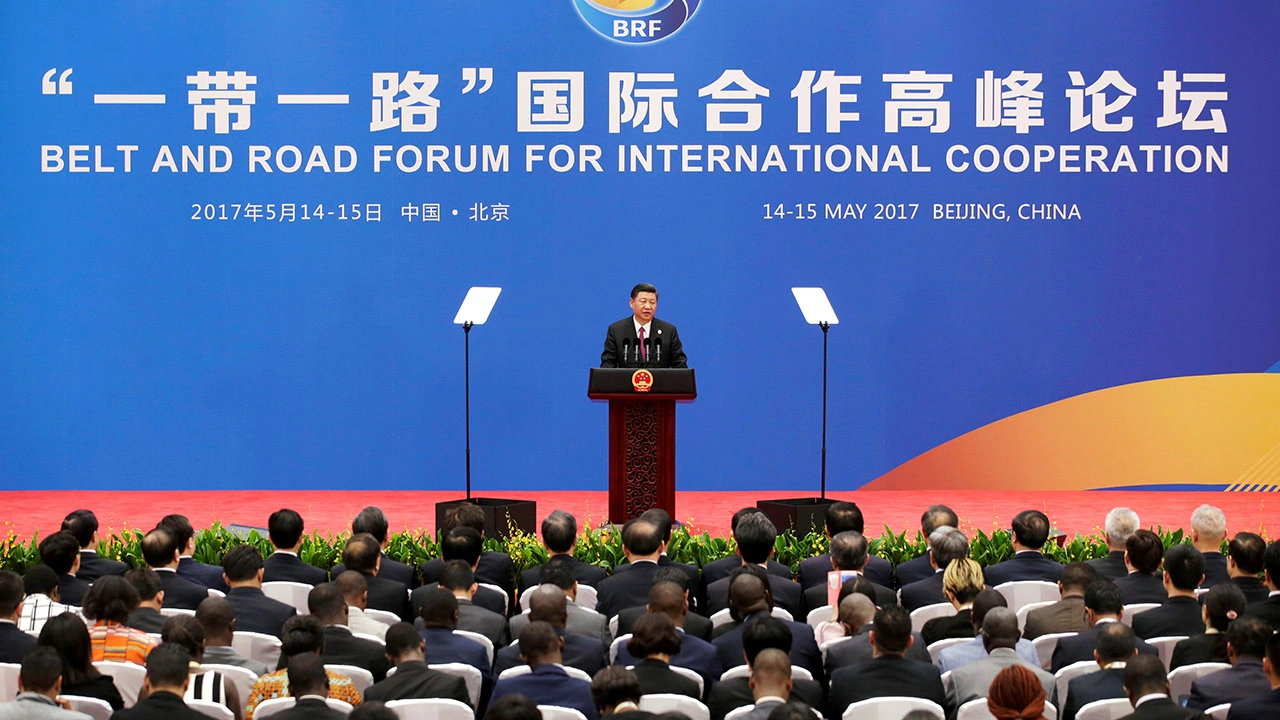The Parcel Pause: How India and the EU’s Coordinated Response to US Tariffs Could Shake Up American Politics
In a surprising and potentially game-changing maneuver, postal authorities in India and across the European Union have announced the suspension of most parcel shipments to the United States, effective immediately or within days. Though not framed as economic retaliation, this is a strategic pause in response to Washington’s sudden tariff overhaul—one that may have serious implications not just for global trade, but for the everyday American consumer and the 2025 political landscape.
This parcel freeze comes at a precarious moment: with the Trump administration preparing to terminate the “de minimis” exemption on low-value imports under $800, international postal systems are bracing for chaos. What was once an arcane customs clause is now center stage in the battle over globalization, e-commerce, and economic nationalism.
The Spark: Trump’s Tariff Overhaul and the End of $800 Duty-Free Imports
At the heart of this disruption is a drastic change to U.S. customs policy, slated to take effect on August 29, 2025. Under the decades-old “de minimis” threshold, U.S. consumers could receive packages worth up to $800 from abroad—duty-free and without burdensome paperwork. This policy supercharged cross-border e-commerce, fueling the rise of low-cost imports from platforms like Temu, AliExpress, Shein, and a growing number of Indian small businesses selling to Americans via Etsy, Amazon, and Shopify.
But that regime is ending. As part of a broader protectionist trade shift, the Trump administration is imposing new import tariffs—up to 15% on goods from Europe and variable duties on imports from India and other nations. However, U.S. Customs and Border Protection (CBP) has failed to provide a clear implementation roadmap. With no finalized duty tables, incomplete forms guidance, and uncertainty around exemptions, foreign postal systems are facing what they consider an operational minefield.
To avoid mislabeling goods, miscalculating duties, or violating customs rules, postal operators have opted to suspend shipments preemptively. On August 25, India’s Department of Posts ceased accepting all parcels bound for the U.S., except basic letters and documents. In parallel, major EU carriers—including the UK’s Royal Mail, France’s La Poste, and Germany’s DHL Paket—announced that August 25 would be the final day for accepting parcels from businesses under standard delivery tiers. Premium services like DHL Express are still running—for now—but at a much higher cost.
A Calculated Jolt: Strategic Coordination or Synchronized Alarm?
This is not a traditional trade war. There are no retaliatory tariffs, no public threats, and no emergency WTO filings. Yet the timing and symmetry of the moves suggest a tacit coordination between India and the EU—two of America’s largest trading partners. Whether by design or by shared frustration, the message is clear: until Washington clarifies its rules, cross-border trade cannot continue as usual.
Postal operators insist the pause is “temporary”, subject to resolution of regulatory ambiguities. But this temporary move is already having very real economic and political consequences, especially as it hits an area of trade previously untouched by public outrage: the parcel economy.
Main Street Disruption: The Political Power of a Delayed Package
What sets this trade disruption apart is who it affects. Unlike financial markets or container shipping rates, parcel delivery touches the average American directly. According to a 2024 Pew Research report, over 60% of U.S. adults purchased goods from overseas in the past year, most commonly through low-cost e-commerce sites that depend on postal infrastructure.
This disruption hits small businesses, families, and hobbyists alike:
-
A parent waiting for a child’s birthday gift ordered from India.
-
A vinyl collector expecting a rare EU pressing.
-
A startup founder sourcing budget components from Bangalore.
It’s not just about money. It’s about trust, convenience, and habit—three things voters value deeply. While only 15% of Americans own stocks, nearly everyone has awaited a package.
And as the parcel pause enters news cycles and social feeds, it risks politicizing the costs of protectionism in ways few other policies can. The inflation narrative of 2022–2023 showed how quickly economic inconvenience becomes electoral backlash. This time, it’s personalized and visible—and it’s happening months before the 2026 midterms.
Framing the Fallout: Domestic Debate and Global Optics
The Biden and Trump camps (and their allies in Congress) are likely to spin this in divergent ways:
-
Protectionist Republicans may argue that the short-term pain is necessary to rebuild American manufacturing and plug tax loopholes exploited by Chinese and Indian e-retailers.
-
Free-trade Democrats and business-friendly independents will counter that this is government overreach harming consumers, small businesses, and the very middle class it claims to protect.
Meanwhile, the blame game intensifies. CBP and the Office of the U.S. Trade Representative (USTR) are already being criticized for lack of preparation and poor global communication. In contrast, India and the EU have come across as measured but firm—they didn’t retaliate with tariffs but simply refused to play in a broken game.
This is soft power in action. By refusing to bear the costs of U.S. unpredictability, India and Europe are forcing Washington to confront the operational chaos its own policies create—not just for foreign firms, but for its own citizens.
What Comes Next?
While premium private carriers like FedEx, UPS, and DHL Express are still operating, their capacity is limited, and rates are climbing. Businesses may rush to find alternatives, but longer-term options like reshoring are neither fast nor cheap.
-
For American consumers, prices will likely rise, delivery times will stretch, and product options may shrink.
-
For U.S. e-commerce giants, the shake-up could either drive domestic sellers to expand or fuel demand for better international logistics clarity.
-
For global partners, the parcel pause could become a blueprint for peaceful but effective resistance to trade bullying.
Conclusion: Not a War—But a Warning
The parcel pause is not economic warfare, but it is a powerful warning shot—a demonstration that even small bureaucratic changes can cause global disruption when mishandled.
India and the EU are signaling: global trade is a two-way street, and post-pandemic interdependence leaves no room for unilateral improvisation. If Washington insists on changing the rules, it must also accept the responsibility of clear communication, global consultation, and operational foresight.
Otherwise, the next box delayed at a doorstep might just be a ballot box consequence.
पार्सल पॉज़: अमेरिका के खिलाफ भारत और यूरोप की समन्वित प्रतिक्रिया कैसे बदल सकती है अमेरिकी राजनीति
एक चौंकाने वाले लेकिन रणनीतिक कदम के तहत, भारत और यूरोपीय संघ के डाक प्राधिकरणों ने संयुक्त राज्य अमेरिका के लिए अधिकांश पार्सल शिपमेंट्स को अस्थायी रूप से स्थगित कर दिया है। यह कोई प्रत्यक्ष आर्थिक युद्ध नहीं है, बल्कि वाशिंगटन की अचानक टैरिफ नीति में बदलाव के जवाब में एक सोची-समझी रोक है—जिसका असर न केवल वैश्विक व्यापार पर बल्कि हर रोज़ के अमेरिकी उपभोक्ता और 2025 की राजनीति पर भी पड़ेगा।
जैसे ही ट्रम्प प्रशासन "डी मिनिमिस" छूट को समाप्त करने की तैयारी कर रहा है—जिसके तहत $800 तक के कम-मूल्य वाले आयात बिना शुल्क के अमेरिका में प्रवेश कर सकते थे—विदेशी डाक प्रणालियाँ गड़बड़ी की आशंका में शिपमेंट रोक रही हैं। यह नीतिगत बदलाव अब केवल तकनीकी मामला नहीं, बल्कि ई-कॉमर्स और वैश्वीकरण के भविष्य की लड़ाई बन गया है।
चिंगारी: “डी मिनिमिस” नीति का अंत और सस्ते आयात पर रोक
इस रुकावट की जड़ में है एक कठोर अमेरिकी सीमा शुल्क नीति में बदलाव, जो 29 अगस्त 2025 से लागू हो रहा है। अभी तक की व्यवस्था के तहत, $800 तक के पार्सल बिना शुल्क और कागजी झंझट के अमेरिका में प्रवेश कर सकते थे। इस नीति ने Temu, AliExpress, Shein जैसे प्लेटफार्मों की बेतहाशा वृद्धि को बढ़ावा दिया—और भारत जैसे देशों से छोटे व्यवसायों को अमेरिकी बाजार से जोड़ दिया।
लेकिन अब यह व्यवस्था समाप्त हो रही है। ट्रंप प्रशासन अब 15% तक का आयात शुल्क यूरोपीय माल पर और भारत समेत अन्य क्षेत्रों से आयात पर विभिन्न शुल्क दरें लगाने जा रहा है। समस्या यह है कि अमेरिकी सीमा शुल्क और सीमा सुरक्षा विभाग (CBP) ने अभी तक स्पष्ट दिशा-निर्देश जारी नहीं किए हैं। शुल्क कैसे गणना की जाए? कौन से फॉर्म भरने हैं? कौन छूटेगा? इन सवालों के जवाब न मिलने पर विदेशी डाक प्रणालियाँ जोखिम से बचने के लिए पार्सल स्वीकार करना बंद कर रही हैं।
25 अगस्त से भारत का डाक विभाग अमेरिका के लिए सभी पार्सल (पत्रों को छोड़कर) लेना बंद कर चुका है। वहीं यूरोप में, ब्रिटेन की रॉयल मेल, फ्रांस की ला पोस्ट, और जर्मनी की DHL ने भी यह घोषणा कर दी कि 25 अगस्त आखिरी दिन होगा जब वे अमेरिका के लिए सामान पार्सल स्वीकार करेंगे (हालांकि उनकी प्रीमियम "DHL एक्सप्रेस" सेवा चालू रहेगी)।
एक सोचा-समझा झटका: समन्वय या साझा चिंता?
हालांकि यह कोई औपचारिक साझेदारी नहीं है, लेकिन भारत और ईयू की समान प्रतिक्रिया इस ओर इशारा करती है कि यह या तो आपसी तालमेल है या कम से कम साझा असंतोष। इन दोनों का अमेरिका से व्यापार विशाल है, और दोनों की डाक प्रणालियाँ ई-कॉमर्स की रीढ़ हैं।
इन देशों ने कहा है कि यह "अस्थायी निलंबन" है और अमेरिकी दिशा-निर्देशों के स्पष्ट होते ही सेवाएँ पुनः शुरू कर दी जाएँगी। यह बयान आक्रामकता नहीं, बल्कि व्यावहारिकता दर्शाता है।
यह है "सॉफ्ट पावर" का कमाल—जिसमें कोई खुलेआम विरोध नहीं है, लेकिन स्पष्ट संदेश है: "जब तक नियम स्पष्ट नहीं होंगे, व्यापार नहीं चलेगा।"
लोकतंत्र की डिलीवरी: पार्सल से राजनीति तक
इस झटके की अनोखी बात यह है कि यह सीधे आम नागरिक को प्रभावित करता है। फाइनेंस या कंटेनर शिपिंग की तरह यह कोई दूर की बात नहीं—यह है आपके दरवाज़े पर आने वाला डिब्बा।
2024 के एक सर्वे के अनुसार, 60% से अधिक अमेरिकी वयस्कों ने पिछले वर्ष अंतरराष्ट्रीय ऑनलाइन शॉपिंग की थी, और अधिकांश ने डाक सेवाओं का उपयोग किया—क्योंकि वे सस्ती होती हैं।
अब वही सेवाएँ रुक गई हैं:
-
कोई माता-पिता जो भारत से अपने बच्चे के लिए जन्मदिन का तोहफा मंगा रहे हैं।
-
कोई संगीत प्रेमी जो यूरोप से दुर्लभ रिकॉर्ड मंगवा रहा है।
-
कोई स्टार्टअप जो भारत से सस्ते कंपोनेंट मंगवा रहा है।
यह केवल आर्थिक नहीं, भावनात्मक असर भी है। और इसका असर चुनावों में पड़ सकता है—खासतौर पर तब, जब 2025 के मध्यावधि चुनाव नज़दीक हैं।
राजनीतिक विमर्श: कौन किसे दोष देगा?
यह मुद्दा अब राजनीतिक रंग लेता जा रहा है:
-
ट्रंप समर्थक कहेंगे कि यह स्थानीय उद्योगों की रक्षा के लिए जरूरी कदम है।
-
डेमोक्रेट्स और उदारवादी, इसे सरकारी अव्यवस्था और उपभोक्ता विरोधी नीति कहकर निशाना बनाएँगे।
इस बीच, सीबीपी और USTR पर दबाव बढ़ता जा रहा है कि उन्होंने विदेशी सहयोगियों को समय रहते स्पष्ट निर्देश क्यों नहीं दिए। वहीं भारत और ईयू नपा-तुला जवाब देकर दिखा रहे हैं कि वे व्यवस्था का हिस्सा हैं, लेकिन नियमों की गड़बड़ी का भार नहीं उठाएँगे।
आगे क्या होगा?
FedEx, UPS, और DHL Express जैसी प्राइवेट सेवाएँ अभी चालू हैं, लेकिन उनकी लागत अधिक है और क्षमता सीमित।
-
अमेरिकी उपभोक्ता महंगे दाम और देरी झेलेंगे।
-
छोटे व्यवसायों को झटका लगेगा।
-
कुछ कंपनियाँ "देश में उत्पादन" की ओर बढ़ेंगी, लेकिन वह दीर्घकालिक समाधान है।
निष्कर्ष: युद्ध नहीं, चेतावनी है
यह कोई व्यापार युद्ध नहीं, लेकिन यह एक स्पष्ट चेतावनी है: एकतरफा नीतिगत बदलाव बिना वैश्विक तालमेल के नहीं चल सकते।
भारत और यूरोप बता रहे हैं कि वैश्विक व्यापार एक साझेदारी है, और अमेरिका को यदि नियम बदलने हैं, तो स्पष्टता, संवाद और ज़िम्मेदारी के साथ बदलने होंगे।
क्योंकि अगली बार अगर कोई पार्सल समय पर न पहुँचे, तो उसका असर सिर्फ उपभोक्ता पर नहीं, बल्कि चुनावी नतीजों पर भी पड़ सकता है।








